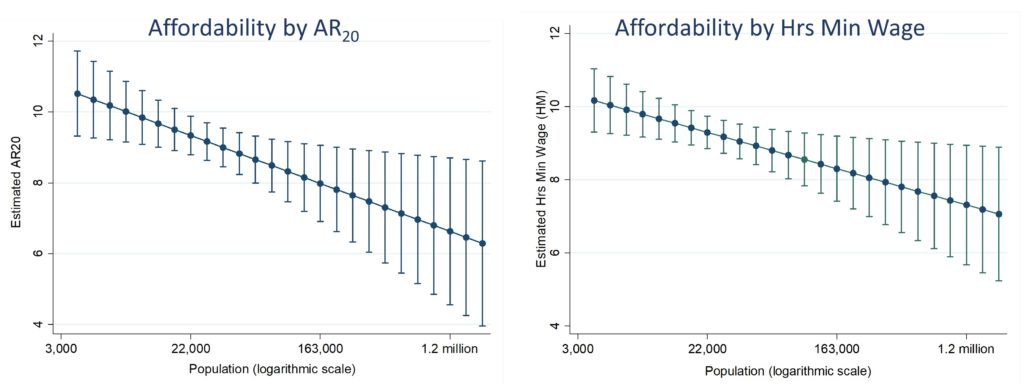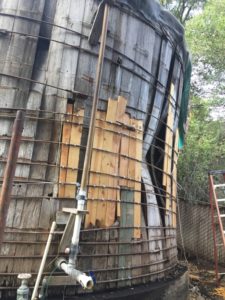Devils (and angels) in the details, Part 3

In early January the California Water Board released its draft proposal for a statewide low-income water bill assistance program. My last couple posts summarized the proposal and discussed the perverse incentives for rate design that the subsidy might create. Continuing the theme of unintended consequences, this one looks at what the statewide assistance program might mean for poor-performing small water systems.
Size matters
All else equal, when it comes to water systems, bigger is better. Water and sewer systems require big infrastructure investments and lots of operating costs to work. When those costs can be spread across large numbers of people and businesses, the average price of water is lower. That makes utilities textbook examples of economies of scale.
Less obviously, the organizations that operate utilities also are subject to economies of scale. Larger organizations can hire and retain higher-quality employees and maintain specialized personnel. As my past research work with David Switzer has shown, these advantages help larger water systems take advantage of human capital in ways that smaller systems can’t.
Larger systems also enjoy significant financial advantages. Larger customer bases tend to be more economically diverse, providing a degree of financial stability to a utility. Financial markets favor large utilities, too, allowing them access to finance capital at lower interest rates than their smaller cousins.

Thing is, just as in the rest of the United States, most of California’s water utilities are really, really small. More than three quarters of California’s 2,800 water systems serve fewer than 3,300 people, but collectively serve just 2% of the state’s population. Meanwhile, the 183 largest systems serve 80% of the state’s population.
Small system struggles
Unfortunately, small systems tend to suffer disproportionately from poor water quality. Here’s the correlation* between annual Safe Drinking Water Act health violations and utility size in California, based on EPA data from 2010-2018:

Study after study after study after study confirms the relationship between system size and drinking water quality.†
Affordability also correlates with system size. So do poverty, income, and unemployment. My recent analysis of water and sewer rates nationwide shows that, all else equal, both AR20 and HM decline as utilities increase in size—that is, on average, water and sewer affordability gets better as utilities get bigger.

That small systems struggle is no secret, and California has in recent years sought to encourage system consolidation through a variety of carrots and sticks. The process is slow, however, and fraught with political conflict. Consolidation is not a panacea, and there are plenty of struggling large and medium-sized systems. But the data are clear on this point: on average, with water utilities, bigger is better.
Props and levers
What does all this have to do with low-income assistance? The proposed program would transfer significant resources from relatively affluent to relatively poor communities. In many cases, those communities are served by the small, perennially underperforming utilities that too often provide lousy water quality at very high prices. Financial pressures from ratepayers are among the strongest incentives for small utilities to consolidate. A low-income assistance program will disproportionately benefit customers of those systems (which is good), but could inadvertently prop up systems that would otherwise move toward consolidation due to financial pressures (which is bad). To some failing small systems, low-income assistance could be financial life support system.

But if structured correctly and implemented carefully, low-income water assistance could help drive small system consolidation. Financial assistance for low-income customers could make consolidation more attractive for the larger utilities and private firms that might otherwise be reluctant to take on the responsibility for troubled small systems with less affluent customers. More directly, the state could make assistance funds contingent on consolidation or compliance with SDWA management requirements. Statewide assistance might be a potent lever to push recalcitrant small systems toward consolidation and its blessings.
That’s why statewide low-income water bill assistance should not be considered in isolation, but rather as part of a comprehensive strategy to improve water systems. The same applies to any plan for a national water affordability assistance program.
Whether a statewide assistance program would prop up failing small systems or lever them into consolidation and sustainability will depend in large part on the administrative structures and processes used to implement the program. I’ll take up those administrative angels and devils in my next post.
*Fitted with a negative binomial regression.
†There are probably another dozen or so studies that I could link here.
